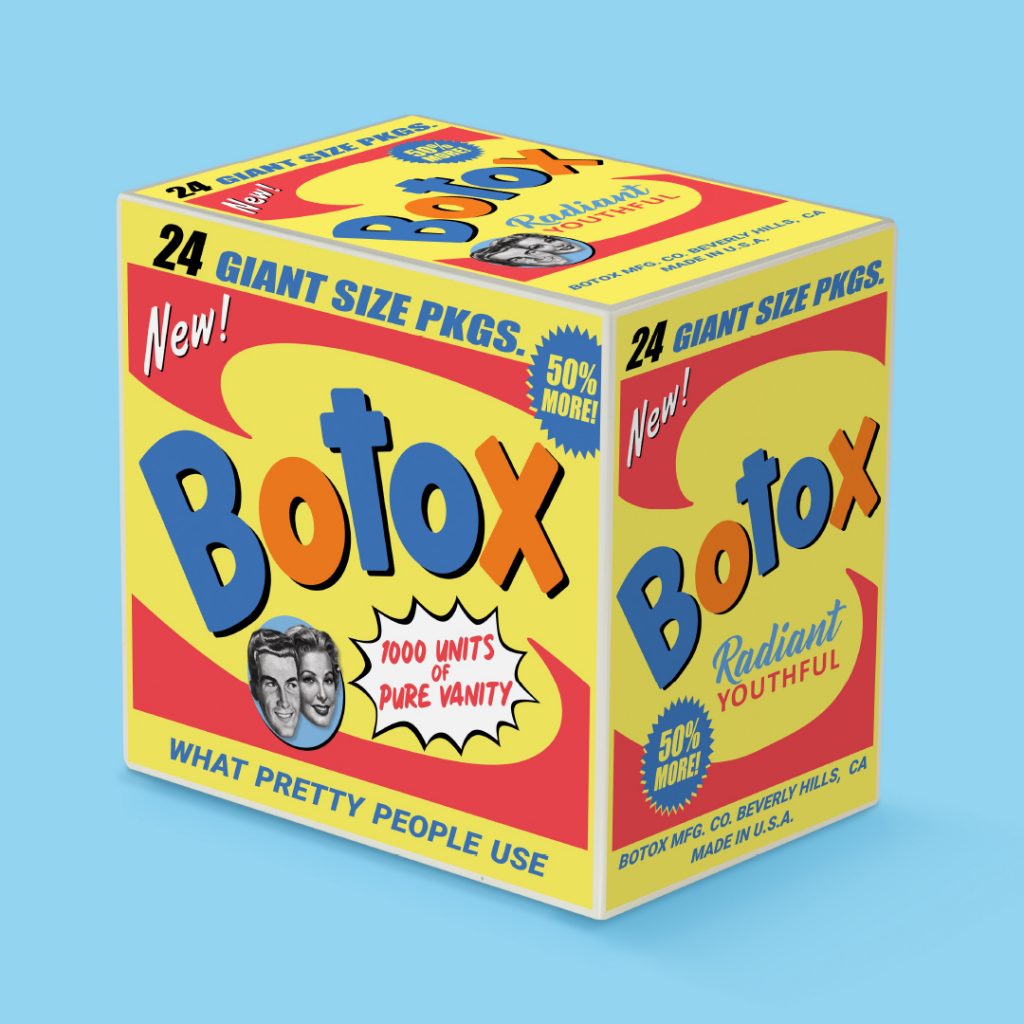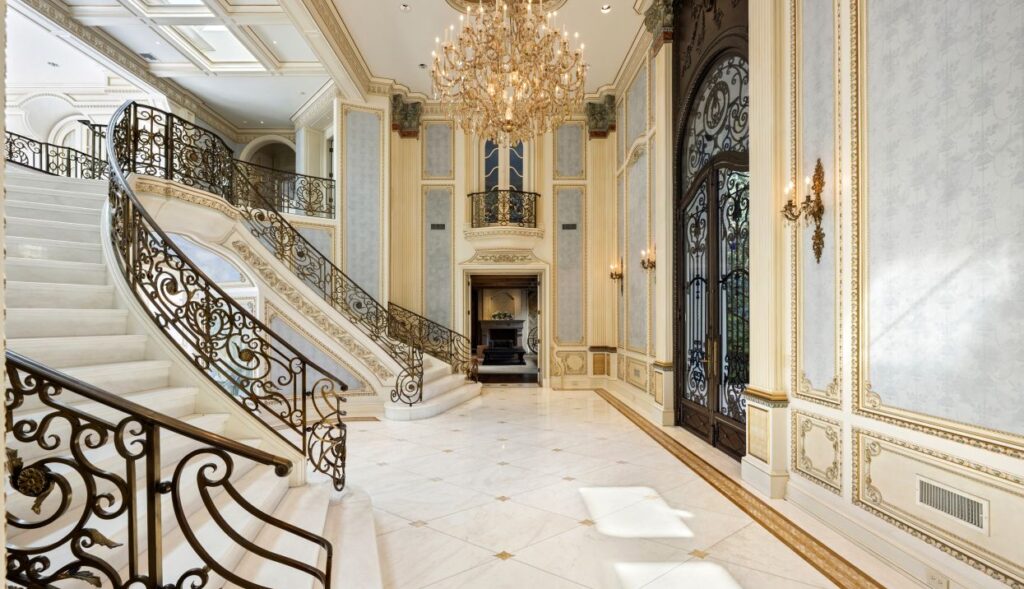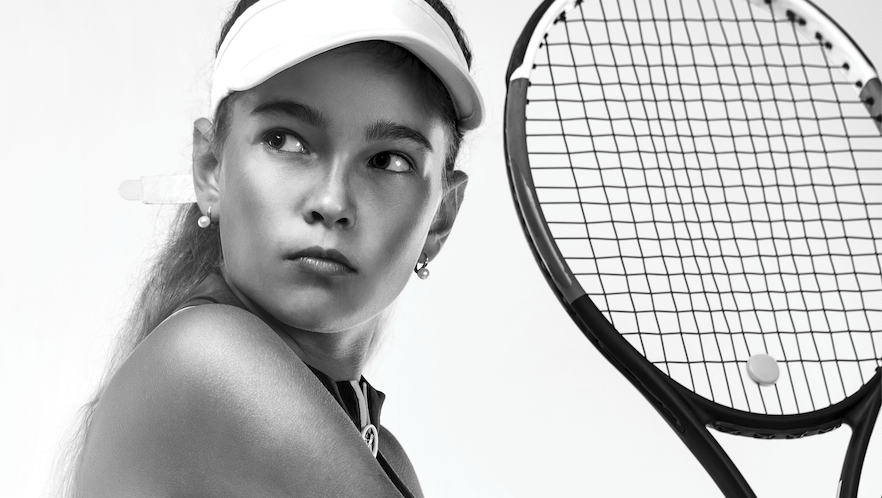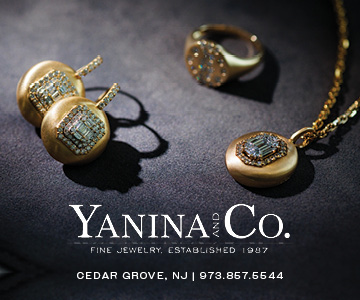From a humble childhood in Communist Cuba to becoming one of America’s most sought-after pop artists, Nelson De La Nuez is one of art’s biggest living icons.
By Michael Scivoli
Los Angeles-based pop artist Nelson De La Nuez masters the language of wealth, power and fame through an immensely intellectual yet comical body of work. Through references to advertising and pop culture, his mixed-media art comments on the state of our society in a way that’s equal parts satire and aspiration. Since he began his career in the ‘80s, his work has been sought after by celebrity admirers and art collectors alike. His installations grace the walls of Hollywood elites such as Sarah Jessica Parker, Howie Mandel and Kim Kardashian. What’s most interesting about De La Nuez though, isn’t his long list of high-profile clientele; it’s his own life’s journey—one which is just as irresistible as the art he creates.
De La Nuez was born in Havana, Cuba in 1959 at a time when political tensions were high. In 1966, his family was granted a leave and De La Nuez and his parents flew into sunny Southern California to start a new life. His childhood on the West Coast gave him a unique perspective on images of pop culture. As he grew up, he learned to be both critical of and embrace it, which subsequently led to a budding career as a pop artist. De La Nuez pulled inspiration from everywhere: board games, newspapers, vintage ads—anything. After selling artwork to the late Michael Jackson just before his passing, various print media, newspapers, as well as TMZ and other media outlets dubbed him “The King of Pop Art”—a name which stuck with him to the present day.
Today, De La Nuez’s work makes appearances at the likes of Art Basel Miami and Art Market Hamptons. His branded home, lifestyle and fashion projects are sold in Nordstrom, Saks Fifth Avenue and Neiman Marcus. But when it comes to artistic creation, everything remains a reflection of himself and his perspective of pop culture—one with a deep understanding of his clientele’s psyche. As times change, so does the artist’s sources from which he borrows. A modern iconoclast, De La Nuez reminds us that art can have a deeper meaning yet still allows us to laugh at ourselves and our cultural habits. In this world, everything is for sale—except for the artist’s passion which in many ways, remains the same today as it did when he began decades ago.

Was there a pivotal moment when you decided to follow your path as an artist?
Somewhat. I was on a path in my life in the corporate world, making good money but wasn’t very happy—just not satisfied. I always came back to my first love, which was creating art. Once I really pursued that on a full-time basis there was no going back. I couldn’t deny the creativity inside me that challenged me as nothing else could. It challenges me mentally and requires that constantly. Without my art, I’d be lost or would have wanted to pursue another creative path, such as film or music.
Tell me about when the moniker “The King of Pop Art” came about?
It was around the spring of 2009 when I first met Michael Jackson. He was honestly in awe of my artwork—really loved it and bought three large pieces. He wanted to buy more except that there was so much chaos and turmoil with news crews chasing him that he had to leave. He asked me about my art and the titles and he declared in that soft yet notable voice that I was “The King of Pop Art and he was the King of Pop,” which made him smile. He seemed to like that. I did as well. It had a nice ring.
Faster than I knew it, headlines in the media and entertainment news the next day picked up on the catchy title, “The King of Pop buys artwork from The King of Pop Art.” Don’t misunderstand, however, I am not a narcissist. This is my brand name—much like singers, rappers or designers have a secondary, sometimes showy, name for their personal brands. It’s my legal trademark, my website, my social media handle and what I use for the licensed brands that I develop partnerships with for many products with my designs, etc. Something I’d also to clarify—which is a falsehood—is that Andy Warhol was actually ever called the “King of Pop Art” while he was alive or at any time in his life—he was not. He was actually called the “Prince of Pop.”
Tell me about some of your first big high-profile commissions. Who were they for? Which snowballed your career the most?
I’ve had a lot of amazing people commission my work, but I’d have to mention the absolute craziness, buzz and sales that occurred around my sales to Michael Jackson in 2009. The combination of him always in the media, his last big London tour occurring and his massive fan following along with his sudden death just after purchasing his art from me created a media and press flurry. They flocked to my studio for news and entertainment interviews and people all over the world—L.A., Dubai and London—wanted to own the art he had just bought before his death. It was insanity like nothing I’d seen. Besides that, however, I have had the pleasure to create custom commission art for outstanding producers, directors, Emmy award-winners, actors, major corporations and business owners—even big art collectors.
One of the biggest record label owners and producers had me create a custom painting where the woman with the thought bubble in the “Material Girl” piece looked like his wife. So I just needed to recreate her skin, hair, a few things and she loved it as her birthday present. When Kim Kardashian and Brian Lee’s company, Shoe Dazzle, started several years ago—they had me create a large custom “Material Girl” for her lobby and match the brand colors and change the text to read, “Darling, all I require are dazzling shoes.” Recently I created a commission that was for the founder of JetBlue airlines, who now went on to create Azul Airlines, and this piece of art was commemorating their very first aircraft in the lease of a brand new fleet for the line. I painted the aircraft which of course read “AZUL” on the plane itself and, for the background, I created vintage images of all of the travel destinations where the airline flew. I get a lot of celebrities and brands who want a bit of their own custom world in the art and I can accommodate many things for them including sizes.

Can you tell me about the process of making your work? Where do you draw inspiration?
I draw inspiration from almost everything. Even the most mundane things like a matchbook cover, for example. I can look at that for instance and say, “That might have sparked an idea.” I might see an old ad or a classic film and gain inspiration from those. I am constantly being inspired on a daily basis. The process starts after that inspiration and idea, usually in the wee hours of the night, when I go back and review all of my notes from that week and envision what I might want to create. I do an immense amount of research for every new piece. I scour my archives of vintage magazines and papers from the 1940s and ’50s which can spark something. Then I execute it on canvas, wood or as a sculpture. That process can take weeks or even months. I always keep my own catalog of notes to refer back to, which list projects I may want to complete in the future or possibly redo.
Have your Cuban roots influenced your artwork in a similar way to your California upbringing?
Not really at all. Remember, I came to the U.S. when I was seven years old with my parents to Southern California/Oceanside, where I started to absorb everything American like a sponge: the TV, commercials, advertising, film and music. My art is a reflection of that early childhood. Therefore, most of my artwork is strongly rooted in pop culture and American icons. The only homage I have done is a series called the “B.C.” (Before Castro), for which I created art, such as Old Havana, that conveys a time before Castro took over. It was a time when Cuba was still magical and innocent, full of beauty and hope. My hard work ethic may have something to do with where I came from. I don’t ever take my success for granted but have worked very hard to harness and cultivate my creativity to get to where I am today.

How do you embed deeper meaning into your work?
I put a lot of energy and focus into each new piece I create to try and connect more with my audience. Meaning can be created through how I build the color composition, the simplicity of the piece itself, what it actually says via text/thought bubble, the background I choose. There’s so much I can do to influence how a viewer sees or reacts to the art. Color plays a major role and I will often tweak or repaint things many times until I get them just perfect. I’m always just trying to communicate my thoughts through my medium. It’s not just about the art, but what can I communicate.
Why do you think your work has been so well-received by luxury audiences?
The art communicates to them. It speaks to the 1 percent that lives those lavish, jet-setting lifestyles but also to those who aspire to that lifestyle and love the message. The message is fun, tongue-in-cheek, and yet, still sophisticated. Phrases like, “Darling, you know I only fly first class!” or “Darling, all I require are fabulous shoes,” is one of my best-selling pieces because it resonates with a lot of women. This is also one that many of my well-known celebrity clients own, such as Sarah Jessica Parker, who became synonymous with iconic shoes.
It’s all about not taking life too seriously but also showing a bit of who you are on your walls. Art truly does reflect your personality and what you are passionate about, so surround yourself with the art that makes statements you love, whether through the images or text, let your art be a reflection of you. This is why luxury-themed artwork sells so well at all of my galleries: Palm Beach, Aspen, Beverly Hills, Boston, DC, Miami, Las Vegas (in Caesar’s Palace) and many more. They are located in very high-end areas of their respective cities.
What piece of your artwork would you like to be remembered for?
I’m only as good as my last piece. I’m always trying to create something better and outdo myself so I don’t think I can choose one piece. Probably if I had to choose now, I can say that my “Material Girl” (shoes) piece has been extraordinarily well-received not just in the States, but worldwide. It has incredible recognition. I make art so others can enjoy my creativity. It’s not just about one piece, it’s about creating new art that’s outside the box. The more people I touch, the more people I reach; that’s what I’d like to be remembered for.

If you could work within a past art movement, which would it be? Why?
Probably the Surrealist artists of the ’30s, ’40s and ’50s. I was inspired greatly by Magritte, who is one of my favorite artists, and Dali. I even created what I called my “Pop Surrealist” series with the Donut Queen and Little Miss Cupcake. My pop surreal style “Martini Pomme De Magritte” was inspired by Magritte’s famous Son of Man, along with a few other fun Magritte’s I did. I also have used Dali’s The Persistence of Memory to serve as part of my own take on pop surrealism.
What is your greatest indulgence in life?
There are two ways to answer that question. The first one that comes to mind as my greatest indulgence is being able to make a living doing what I love to do. Literally my creativity.
The fact that I look forward to what I do on a daily basis with excitement, and people pay me good money for it, now that’s amazing! I never take that for granted. If I had answered that question in a “material” way—it would be that my Phantom Rolls Royce is my indulgence. I literally came from nothing and earned everything I have. I always said I’d love to own a Rolls someday, so I did. This is actually my second. I have worked very hard on my creativity over many, many years.
For more on De La Nuez and his work, visit kingofpopart.com.






